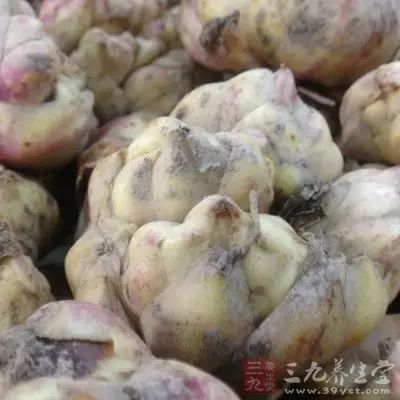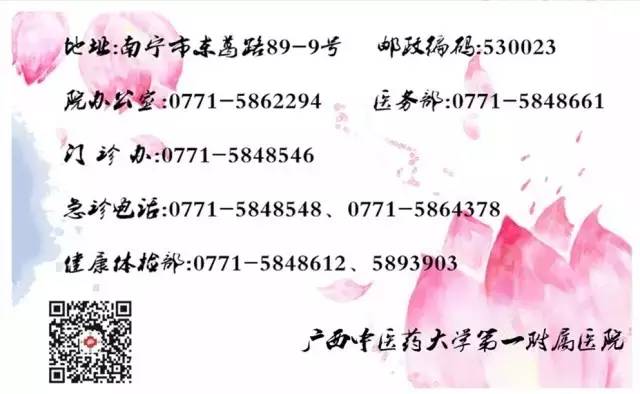
As winter arrives, have you experienced stomach pain or coldness due to the cold weather and consumption of cold foods? Does the pain worsen after fatigue or exposure to cold? Symptoms such as vomiting clear fluids and fatigue may indicate a deficiency of Spleen and Stomach Yang. Today, we will explore Spleen and Stomach Yang deficiency, how to regulate it, and what foods to consume.
Spleen and Stomach Yang deficiency is a term in Traditional Chinese Medicine (TCM) that refers to the syndrome of excess Yin and deficient Yang in the Spleen and Stomach, often caused by irregular eating habits, excessive consumption of cold foods, overexertion, and emotional distress.
Symptoms of Spleen Yang deficiency may include poor appetite, abdominal distension, abdominal pain that prefers warmth and pressure, a pale and moist tongue, and a weak pulse. Other signs include cold extremities, loose stools, and a preference for warmth.
Stomach Yang deficiency is often triggered by cold weather or the consumption of cold foods, leading to a sensation of coldness in the stomach. Symptoms include dull, persistent stomach pain that improves with warmth, increased pain when fasting, and a tendency to vomit clear fluids. Patients may also experience fatigue, cold extremities, and loose stools.
In TCM, Spleen and Stomach weakness is primarily categorized into three types: Spleen and Stomach Qi deficiency, Spleen Yang deficiency, and Stomach Yin deficiency.
1. Symptoms of Spleen and Stomach Qi deficiency include shortness of breath, fatigue, dizziness, stomach distension, pain, belching, reduced appetite, post-meal fullness, loose stools, and a pale complexion.

2. Spleen Yang deficiency is characterized by cold abdominal pain, which worsens with the consumption of cold or greasy foods, leading to diarrhea.
3. Stomach Yin deficiency is marked by symptoms of internal heat, dry mouth, increased hunger, stomach discomfort, and oral ulcers.
Prevention
1. Dietary Therapy
(1) Pepper Pig Stomach Soup
Ingredients: Pepper, pig stomach, 5 honey dates. Clean the pig stomach with flour and salt. Place the pepper inside the stomach, sew it up, and add it along with honey dates to a pot with sufficient water. Boil over high heat, then simmer for 3 hours. Season and consume the soup along with the pig stomach and honey dates.
Effects: Warms the middle, strengthens the Spleen, disperses cold, and alleviates pain. Suitable for patients with gastric ulcers or duodenal ulcers due to Spleen and Stomach Yang deficiency, presenting with cold stomach pain, preference for warmth, abdominal distension, and cold extremities.
(2) Fennel Dog Meat Soup
Ingredients: Fennel, cinnamon, dried tangerine peel, grass fruit, 2 slices of ginger, dog meat, soy sauce, and 4 cloves of garlic. Clean the spices and crush the fennel, cinnamon, and grass fruit. Peel the garlic. Clean the dog meat, cut into small pieces, and stir-fry in hot oil to remove the gamey taste.
Combine all ingredients in a pot with sufficient water, boil, then simmer until the dog meat is tender. Consume the soup and meat. Take once daily, divided into two servings, for 5 days as a course of treatment. Effects: Warms the middle, supports Yang, and warms the stomach. Suitable for cold stomach pain, preference for warmth, vomiting clear fluids, and fatigue.
(3) Ginger Porridge
Ingredients: Fresh ginger slices, 2-5 jujubes, and glutinous rice. Cook together to make porridge, seasoning with oil and salt. This dish warms the Spleen, nourishes the Stomach, dispels wind, and alleviates cold. Suitable for post-illness recovery or elderly patients with Spleen and Stomach Yang deficiency, presenting with reduced appetite, vomiting clear fluids, abdominal pain, diarrhea, headaches, nasal congestion, and chronic bronchitis with cold symptoms. For wind-cold colds, omit jujubes and add 3 green onions.
(4) Stomach Silk Soup
Clean beef or pig stomach, boil in water for 3 minutes, discard the water, and simmer in clean water until 70% cooked. Add salt, cooking wine, Sichuan pepper, and fennel, then cook until fully done. Cool slightly, cut into strips, and place in a bowl with fresh ginger slices and seasoning. Pour the second cooking broth over the strips and steam for 45 minutes. Serve hot.
(5) Fennel Vegetable Buns
Chop fennel, remove bones and skin from chicken, and mix both with fresh ginger juice, Sichuan pepper, seasoning, and sesame oil to make the filling. Use fermented wheat flour to make the dough, fill it, and steam for 20 minutes. Serve hot.
(6) Dried Ginger Honey Glutinous Rice Drink
Ingredients: Dried ginger, glutinous rice, honey. Wash and grind the dried ginger and glutinous rice into fine powder, boil with water for 30 minutes, strain, and mix in honey when warm. Take in the morning and afternoon. Effects: Warms the stomach, nourishes deficiency, stops vomiting, and disperses cold.
(7) Ginger Milk Drink
Ingredients: Fresh ginger, fresh milk. Wash and peel the ginger, slice it, mash with water to extract juice, and boil with milk. Take in the morning and afternoon. Effects: Warms and nourishes the Spleen and Stomach.
(8) Other Remedies
1. Fresh ginger, glutinous rice, and white sugar. Wash and slice ginger, cook with glutinous rice and water, boil, then simmer until thick, adding sugar. Take in the morning and evening. Effects: Warms the middle, disperses cold, and alleviates vomiting.
2. One carp, cleaned and sliced, with dried ginger and salt, cooked together. Effects: Warms and nourishes the Spleen and Stomach, suitable for appetite loss.
3. Cooked lamb with tofu and ginger, seasoned with salt, suitable for menstrual irregularities and Spleen and Stomach Yang deficiency.
4. For elderly patients with Spleen and Stomach Yang deficiency, reduced appetite, vomiting clear fluids, abdominal pain, and chronic bronchitis with cold symptoms, prepare ginger porridge as mentioned above.
2. Dietary Considerations
(1) Favor warm, sweet, and spicy foods that strengthen the Spleen, warm the Stomach, and dispel cold, such as rice, lamb, chicken, beef stomach, pig stomach, chain fish, grass carp, lychee, chili, leeks, fennel, mustard greens, cinnamon, dried ginger, fresh ginger, Sichuan pepper, black cardamom, and brown sugar.

(2) Avoid cold and cooling foods that can damage Spleen and Stomach Yang, such as buckwheat, oats, mung beans, tofu, spinach, water spinach, eggplant, black fungus, enoki mushrooms, lettuce, winter melon, celery, amaranth, water bamboo, cucumber, bitter melon, watermelon, persimmons, bananas, loquats, pears, peaches, kiwis, water plants, clams, Ophiopogon, snails, crabs, water chestnuts, and melons.
Additionally, those with cold stomach pain should avoid mung beans, persimmons, raw tomatoes, bamboo shoots, loofah, raw lettuce, kelp, raw loofah, raw radish, raw lotus root, raw cucumber, raw sweet potatoes, honeysuckle, chrysanthemums, mint, duck eggs, clams, water spinach, and various cold drinks and frozen foods, as these can exacerbate Spleen and Stomach Yang deficiency pain.
3. Foot Therapy
Foot therapy is a common health maintenance method, and acupressure can also be effective for treating stomach diseases.
(1) The solar plexus point is located on the bottom of the foot, beneath the second and third toe joints, where a depression can be felt. Massage in an upward direction.
(2) The stomach point is located at the first bone joint beneath the big toe. The massage direction differs slightly: the left foot is massaged from outside to inside, while the right foot is massaged from inside to outside.
(3) The adrenal gland point is located at the deepest part beneath the solar plexus. This reflex area is harder to find. Massage with a pressing and releasing technique.
(4) The pancreas point is located on the inner side of the foot, below the stomach point. It can be felt as small protrusions. The left foot is massaged from outside to inside, and the right foot from inside to outside.
(5) The duodenum point is located on the inner side of the foot, below the pancreas reflex area and above the bladder reflex area. It can be felt as a depression. The left foot is massaged from outside to inside, and the right foot from inside to outside.
(6) The liver and gallbladder point is located on the upper half of the foot, beneath the third and fourth toe joints. It can be felt as a long depression. Massage from bottom to top.
(7) The chest lymph node point is located in the depression between the big toe and the second toe. Massage from the outer side of the foot towards the heel.
(8) The upper body lymph node point is located on the inner side of the foot, above the ankle joint. It can be felt as a depression. Massage from outside to inside.
TCM Secret Recipes
1. Gao Liang Jiang and glutinous rice: Boil Gao Liang Jiang with water in a clay pot to extract the juice. Use this juice to cook glutinous rice porridge. Take on an empty stomach once daily for 3-7 days. Suitable for cold stomach pain.
2. Cloves, cinnamon, and brown sugar: Soak cloves and cinnamon in warm water, boil vigorously, then simmer for 20 minutes. Strain and mix in brown sugar. Take 5-10 ml three times daily. Suitable for cold abdominal pain.
3. Fennel and pepper: Grind together into fine powder, form into pills with wine, and take 3-6 grams with warm wine. Disperses cold, regulates Qi, and alleviates pain, suitable for cold stomach pain.
4. Pig stomach (dog stomach is better), glutinous rice, cloves, cinnamon, and fennel: Place all ingredients in a pot with seasonings like ginger, scallions, salt, wine, and soy sauce. Simmer until very tender, then mix with glutinous rice porridge and take on an empty stomach three times daily. Suitable for stomach pain.
5. Carp, ginger, tangerine peel, and pepper: Clean the carp, and stuff it with ginger, tangerine peel, and pepper wrapped in gauze. Place in a pot with sufficient water, simmer until cooked, add a little salt, and consume the soup and fish on an empty stomach twice daily. Suitable for stomach pain after cold exposure.
6. Pepper, cinnamon, Bai Zhu (White Atractylodes), scallions, pig stomach, and salt: Clean the pig stomach, mix with seasonings, fill it, and place in a clay pot with water. Boil vigorously, then simmer until tender. Consume on an empty stomach, drinking the soup, 2-3 times daily.
7. Lily, Dan Shen (Salvia miltiorrhiza), Wu Yao (Lindera aggregata), Gao Liang Jiang, and Xiang Fu (Cyperus rotundus): Decoction, one dose daily. This famous formula by TCM expert Jiao Shude regulates Qi, disperses cold, warms the middle, and harmonizes the Stomach, suitable for stomach pain.

8. Pepper, cinnamon, Bai Zhu (White Atractylodes), scallions, pig stomach, and salt: Clean the pig stomach, mix with seasonings, fill it, and place in a clay pot with water. Boil vigorously, then simmer until tender. Consume on an empty stomach, drinking the soup, 2-3 times daily.
9. Grass fruit, lamb, barley, and salt: Cook cleaned barley in water to make porridge. Then, boil the cleaned lamb and grass fruit until cooked. Combine with the barley porridge, simmer until boiling, and add the lamb. Serve warm.
This formula warms the stomach and alleviates distension, suitable for Spleen and Stomach Yang deficiency with stomach distension and pain.
10. Bai Shao (White Peony), Gui Zhi (Cinnamon Twig), Gan Cao (Licorice), Sheng Jiang (Fresh Ginger), and 4 jujubes: Decoction, mix in maltose, and take warm 2-3 times daily. Suitable for cold abdominal pain.
Conclusion: Through the above introduction, you should have a better understanding of the symptoms of Spleen and Stomach Yang deficiency. If you experience abdominal pain, do not ignore it; investigate the cause. The article also introduces preventive and dietary therapy methods. TCM treatment is safe and healthy, so let’s take action!
(Source: Sanjiu Health Hall)

↓↓↓ Click “Read Original” 【View Original Source】

